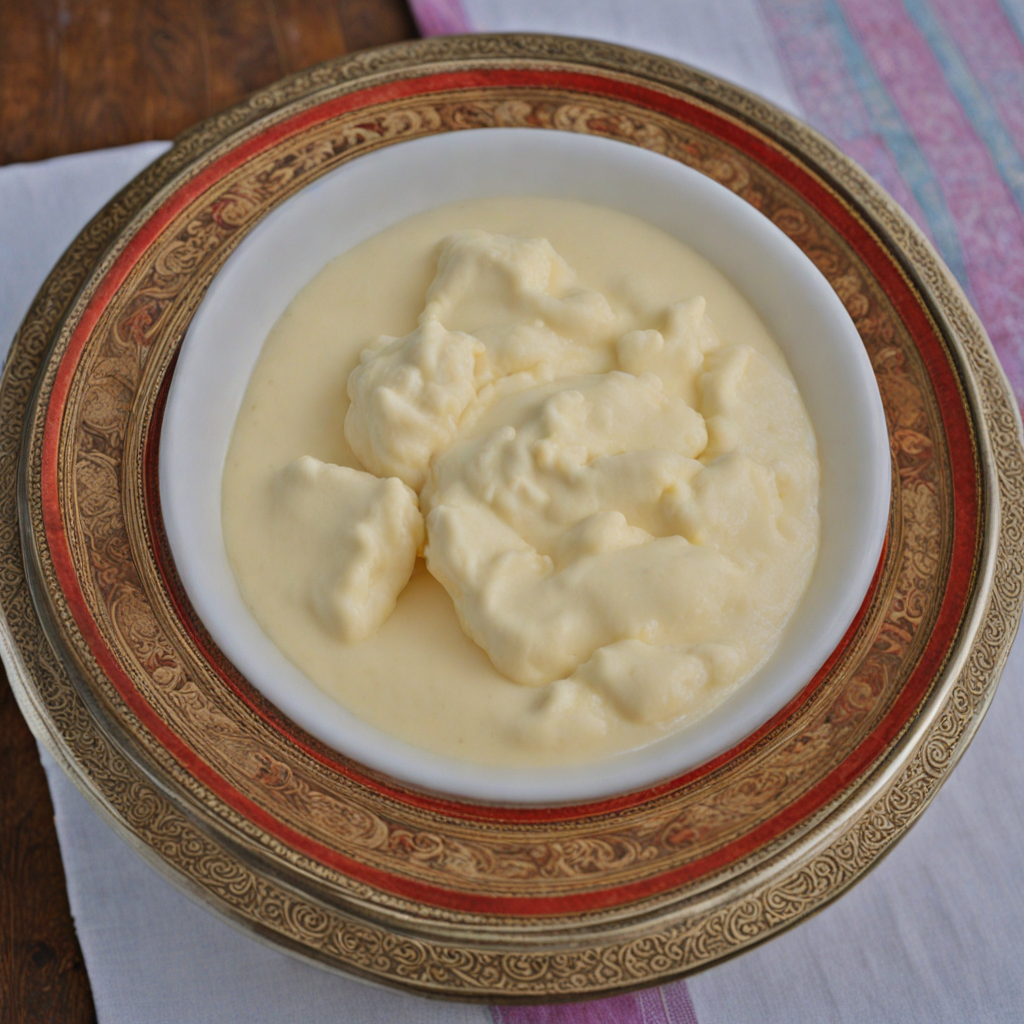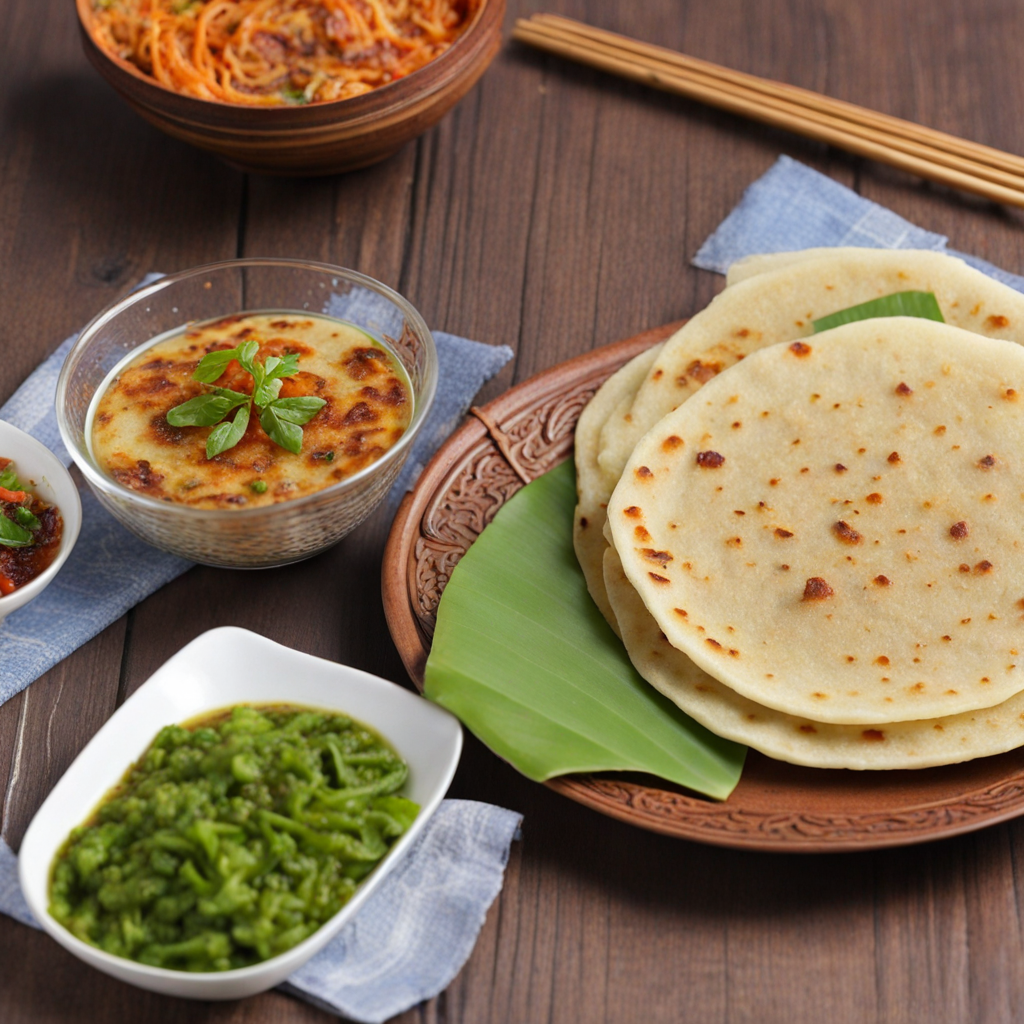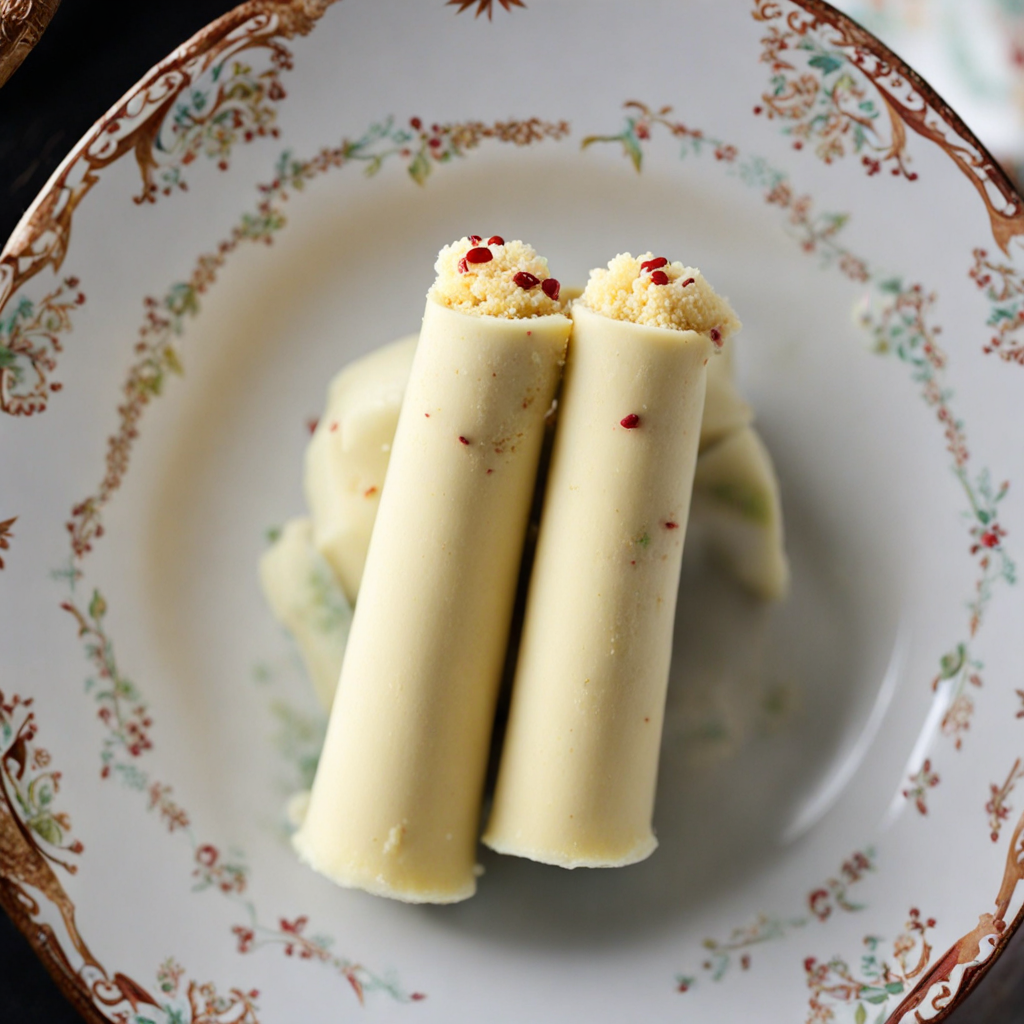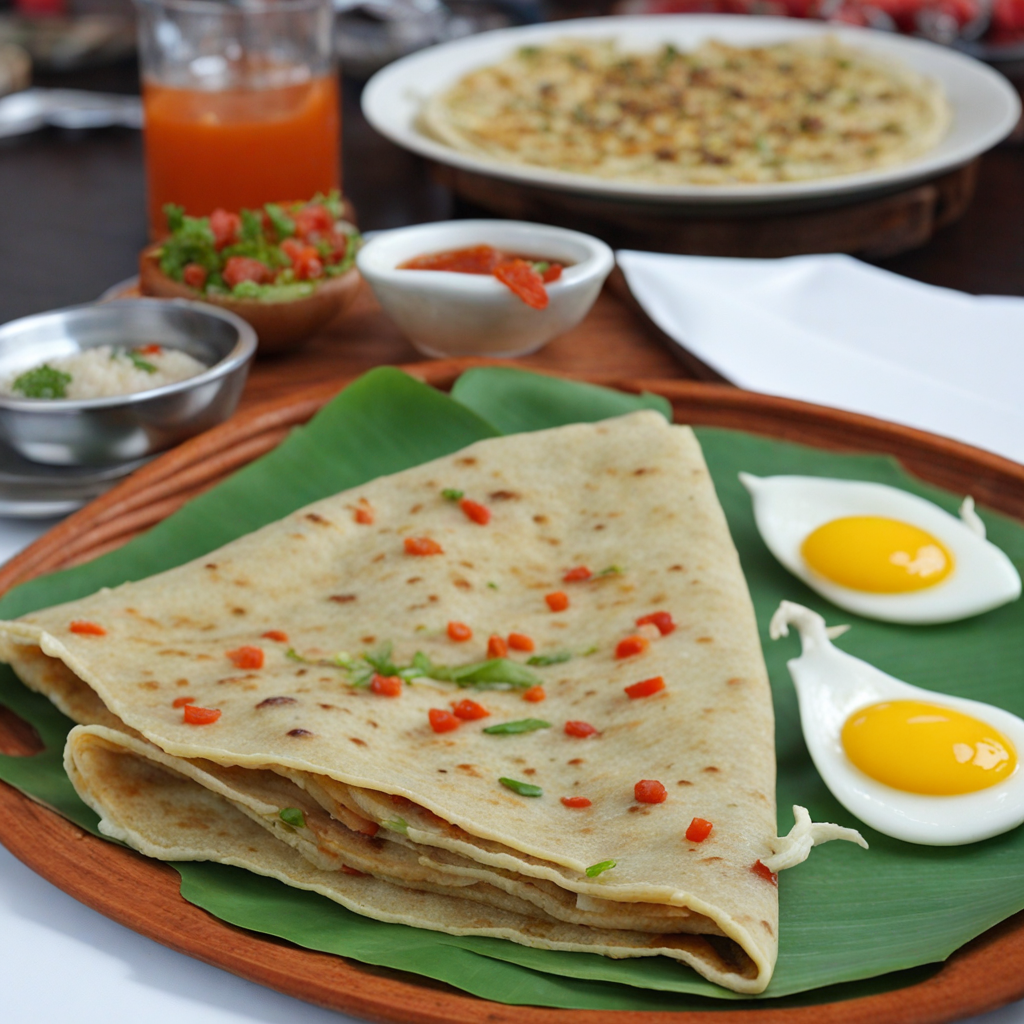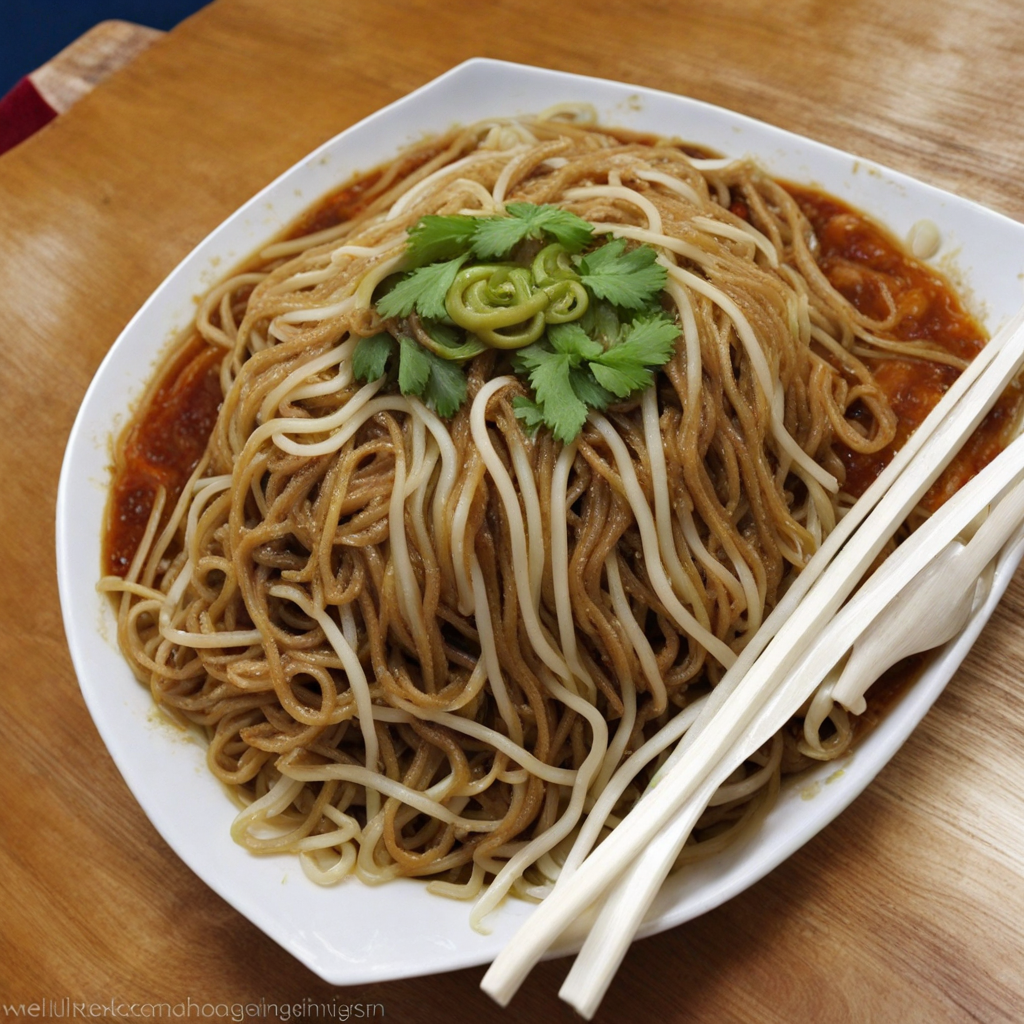Bhaktapur Curd
Bhaktapur Curd, also known as "juju dhau," is a traditional delicacy hailing from the ancient city of Bhaktapur in Nepal. This creamy yogurt is renowned for its smooth texture and rich, tangy flavor, which is achieved through a meticulous fermentation process. The curd is made from the milk of local cows, which graze on the lush green pastures surrounding the area, contributing to its unique taste. The milk is boiled and cooled before being inoculated with a starter culture, allowing it to ferment naturally, resulting in a product that is both refreshing and indulgent. The flavor profile of Bhaktapur Curd is uniquely complex, with a natural sweetness that balances its tanginess. Its creamy consistency makes it an ideal accompaniment to various Nepali dishes, or it can be enjoyed on its own, often served in traditional clay pots that enhance its rustic charm. Locals often enjoy it with a sprinkle of sugar or mixed with seasonal fruits, elevating the tasting experience. The curd is not just a staple in daily meals but also holds cultural significance during festivals and celebrations, symbolizing prosperity and good health. One of the most delightful aspects of Bhaktapur Curd is its versatility. It can be used in both savory and sweet dishes, serving as a base for sauces or as a cooling agent to balance spicier foods. Additionally, it is a common ingredient in traditional sweets like "kheer," where it adds a creamy element to rice pudding, or in "lassi," a refreshing yogurt-based drink. For those looking to discover a new taste, Bhaktapur Curd offers a journey through Nepalese culture, full of rich flavors and a sense of tradition that connects the past with the present.
How It Became This Dish
Bhaktapurko Dahi: A Cultural and Culinary Treasure of Nepal Nestled in the heart of the Kathmandu Valley, the ancient city of Bhaktapur is renowned for its rich history, stunning architecture, and vibrant culture. Among its many culinary delights, one delicacy stands out as a symbol of the city's heritage: Bhaktapurko Dahi, or Bhaktapur Yogurt. This creamy and tangy yogurt is not just a delightful treat; it encapsulates the essence of Bhaktapur’s traditions, its agricultural practices, and the communal spirit of its people. #### Origins of Bhaktapurko Dahi The history of Bhaktapurko Dahi dates back several centuries, intertwined with the agricultural practices of the region. The Kathmandu Valley, with its fertile soil and favorable climate, has long been an agricultural hub. The indigenous people of Bhaktapur have relied on the land for sustenance, cultivating crops and raising livestock, particularly cows. This reliance on dairy farming laid the foundation for the production of yogurt, which has been a staple in the Nepali diet for generations. Yogurt itself is believed to have been consumed since ancient times, with references found in texts from various cultures, including the Indian subcontinent. The traditional method of making yogurt involves fermenting milk, a practice that has been passed down through generations. In Bhaktapur, this process has remained largely unchanged, characterized by the use of locally sourced milk, often from the indigenous breeds of cows known for their rich milk. #### The Unique Process of Making Bhaktapurko Dahi What sets Bhaktapurko Dahi apart from other varieties of yogurt is its unique preparation method and the quality of ingredients used. Traditionally, the yogurt is made from whole milk, which is boiled and then cooled to a specific temperature before introducing a starter culture. The fermentation process is carried out in clay pots, which not only contribute to the flavor but also help maintain the ideal temperature for fermentation. The use of clay pots is significant; they allow the yogurt to breathe and develop a distinct taste and texture. The local climate, with its warm days and cool nights, also plays a crucial role in the fermentation process, allowing the yogurt to develop a slight tanginess that is characteristic of Bhaktapurko Dahi. Once set, the yogurt is often topped with a drizzle of honey, a sprinkle of roasted sesame seeds, or served alongside traditional Nepali dishes such as "king curd" (a thickened yogurt) or "dahi chiura" (yogurt with flattened rice), enriching its nutritional value and enhancing the dining experience. #### Cultural Significance of Bhaktapurko Dahi In Bhaktapur, yogurt is more than just a food item; it is an integral part of the local culture and community. It is often featured in festivals, rituals, and everyday meals, symbolizing prosperity and health. During special occasions, families prepare large quantities of yogurt to share with neighbors and friends, reinforcing community bonds. This practice of sharing food reflects the values of hospitality and generosity that are deeply rooted in Nepali culture. Bhaktapurko Dahi is also linked to various traditional celebrations. For instance, during the festival of Bhaktapur Jatra, locals prepare and distribute yogurt as part of the celebratory offerings. The act of giving yogurt symbolizes blessings of good health and abundance for the coming year. Moreover, yogurt plays a vital role in the daily diet of the people of Bhaktapur. It is often consumed as a side dish or used as a base for various recipes. Its nutritional benefits — rich in probiotics, calcium, and protein — make it a favored choice among families, particularly for children and the elderly. #### Development Over Time The preparation and consumption of Bhaktapurko Dahi have evolved over the years, yet the essence of this traditional food has remained intact. The advent of modern technology brought about changes in dairy farming and production methods across Nepal. While some may opt for commercial yogurt brands available in supermarkets, many locals still prefer the traditional methods, valuing the authenticity and taste of homemade Bhaktapurko Dahi. In recent years, there has been a resurgence of interest in traditional foods, driven by a growing awareness of the benefits of consuming locally sourced, organic products. This shift has led to a renewed appreciation for Bhaktapurko Dahi, prompting younger generations to learn the traditional techniques of yogurt preparation from their elders. Workshops and cooking classes focused on traditional Nepali cuisine have also emerged, highlighting the importance of preserving culinary heritage. Furthermore, tourism has played a significant role in the revival of Bhaktapurko Dahi. As more visitors flock to Bhaktapur to experience its rich history and culture, local artisans and food producers have seized the opportunity to showcase their culinary specialties. Yogurt shops and small eateries featuring Bhaktapurko Dahi have opened, allowing tourists to savor this authentic dish while supporting local businesses. #### Challenges and Future Prospects Despite its cultural significance and popularity, Bhaktapurko Dahi faces challenges in the modern food landscape. The rise of mass-produced dairy products and changing dietary habits pose threats to traditional methods of yogurt preparation. Additionally, the increasing urbanization of Bhaktapur has led to a decline in traditional farming practices, which could impact the availability of high-quality milk essential for making authentic yogurt. However, the commitment of local communities to preserve their culinary heritage offers hope for the future. Initiatives aimed at promoting sustainable agriculture and supporting local dairy farmers can help ensure the continued production of Bhaktapurko Dahi. By fostering a sense of pride in their culinary traditions and encouraging the younger generation to engage with their food culture, the people of Bhaktapur can secure the legacy of their beloved yogurt for years to come. #### Conclusion Bhaktapurko Dahi is more than just a delicious yogurt; it is a culinary emblem of Bhaktapur's rich cultural heritage. Its origins, steeped in the agricultural practices of the region, reflect a deep connection to the land and community. As it continues to be enjoyed in homes and shared during festivals, Bhaktapurko Dahi stands as a testament to the resilience of cultural traditions in a rapidly changing world. By embracing its past while adapting to the present, Bhaktapurko Dahi is poised to thrive, bridging generations through the simple yet profound act of sharing food.
You may like
Discover local flavors from Nepal


